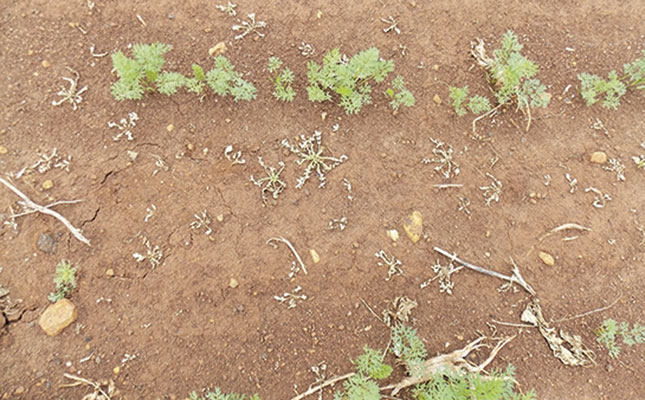
Photo: Bill Kerr
When I started farming in 1965, it was common practice to sow extra thick at this challenging time of the year.
To ensure they had sufficient plants for a good yield, many farmers planted three times the amount of seed they normally used under favourable conditions!
The problem was that on occasion the weather would become favourable for good germination, resulting in excess plants.
Workers then had to thin out the stand to the required population size. With the high cost of labour, this practice is no longer affordable.
Carrot seed is also far more expensive and few farmers today can afford to plant it in such quantities.
Another old method of ensuring a good stand – mulching – may be worth resurrecting.
Here, a thin layer of straw or grass was placed on the beds to provide cooling shade and prevent crusting and surface compaction during heavy rain.
This mulch was thin enough for the emerging carrots to grow through. It did take labour and increase the cost, however, as the mulching material had to be cut or sourced.
Given the high cost of hybrid seed today and the economic benefit of having a good stand in adverse conditions with lower damping-off risks, I feel the practice of mulching might still be viable.
One approach could be to pass straw through a hammer mill, and place a thin layer of this on the planted surface of the bed.
Getting the correct stand is also very important.
When the carrots are 20cm tall, there may seem to be very little difference between
a poor stand and a good one – until you look more closely.
The correct stand can make a big difference in the tonnage as well as the uniformity of the carrot size.
With some varieties, however, a thinner stand – even down to 400 000 plants/ha – can still provide the maximum tonnage.
The problem, though, is that unless the crop is used for processing, the larger carrots will be downgraded. Most modern varieties are bred for pre-packs and are unsuitable for producing large carrots anyway.
the planter: ideal for a large-scale operation
The size required will depend on the market demand, which is usually in a narrow range in South Africa.
This makes correct plant population and even spacing very important.
A modern planter may therefore be a good investment, despite their very high cost. These machines do an excellent job and the expense may be justified if you’re planting on a large scale.
The stand will vary according to the area and size of carrot required. For example, a denser stand can usually be produced in the Western Cape than up north in summer due to more daylight hours.
The uniform placement of seeds plays a role as well. A few seeds close together will result in suppressed plants.
These runts are equivalent to weeds as they rob other plants of sunlight and are themselves unmarketable.
Bill Kerr is a vegetable specialist and breeder.












